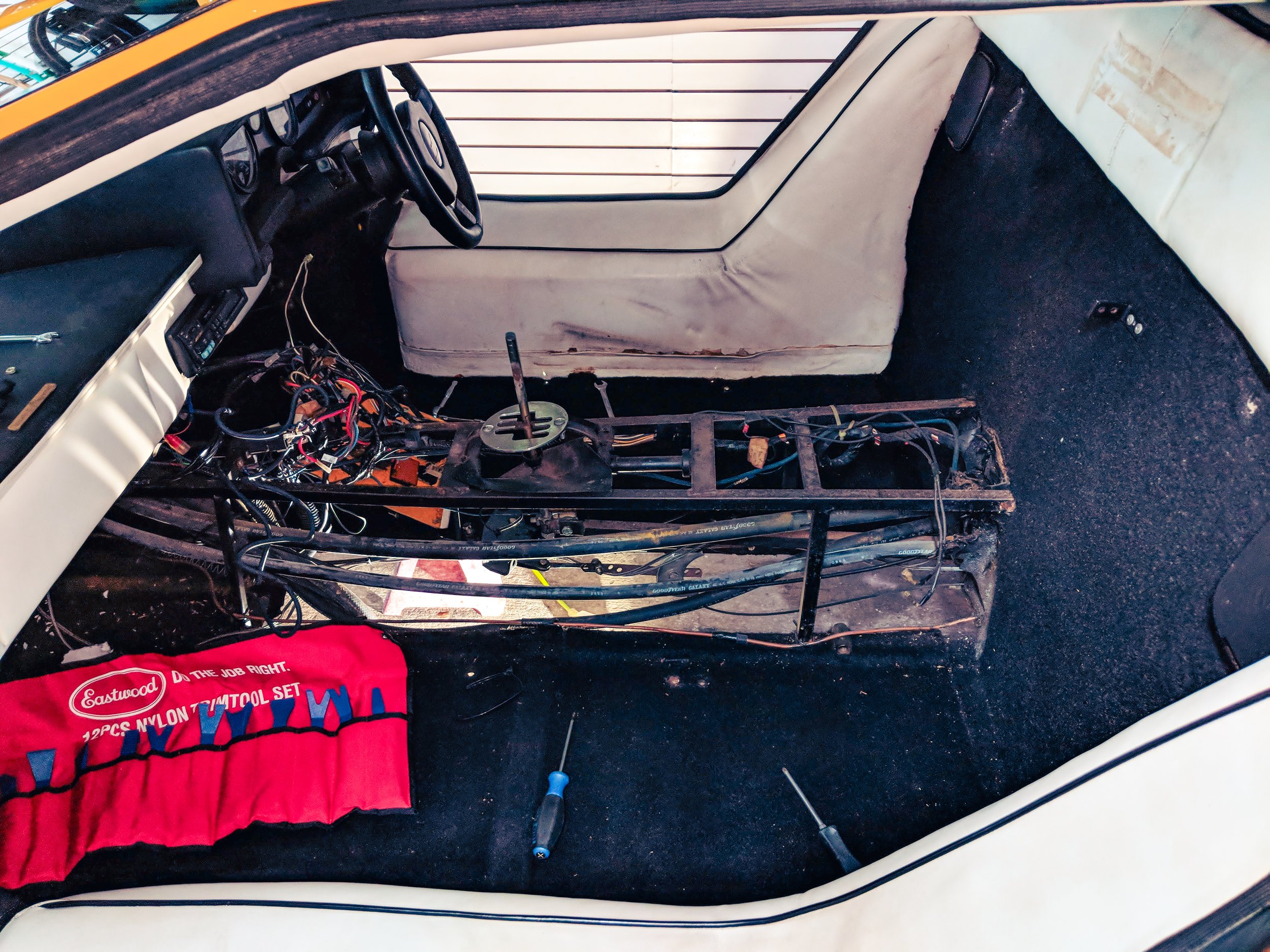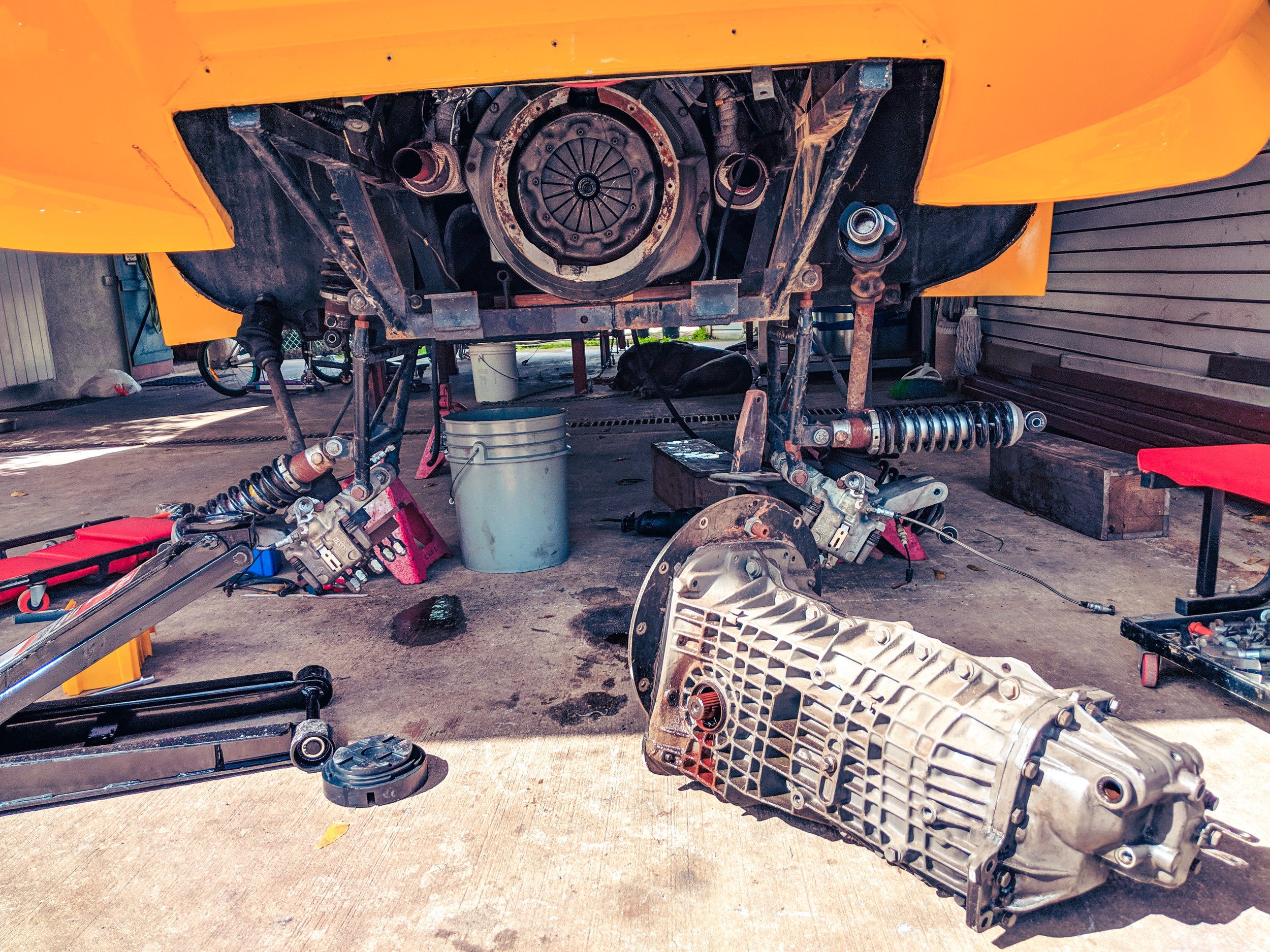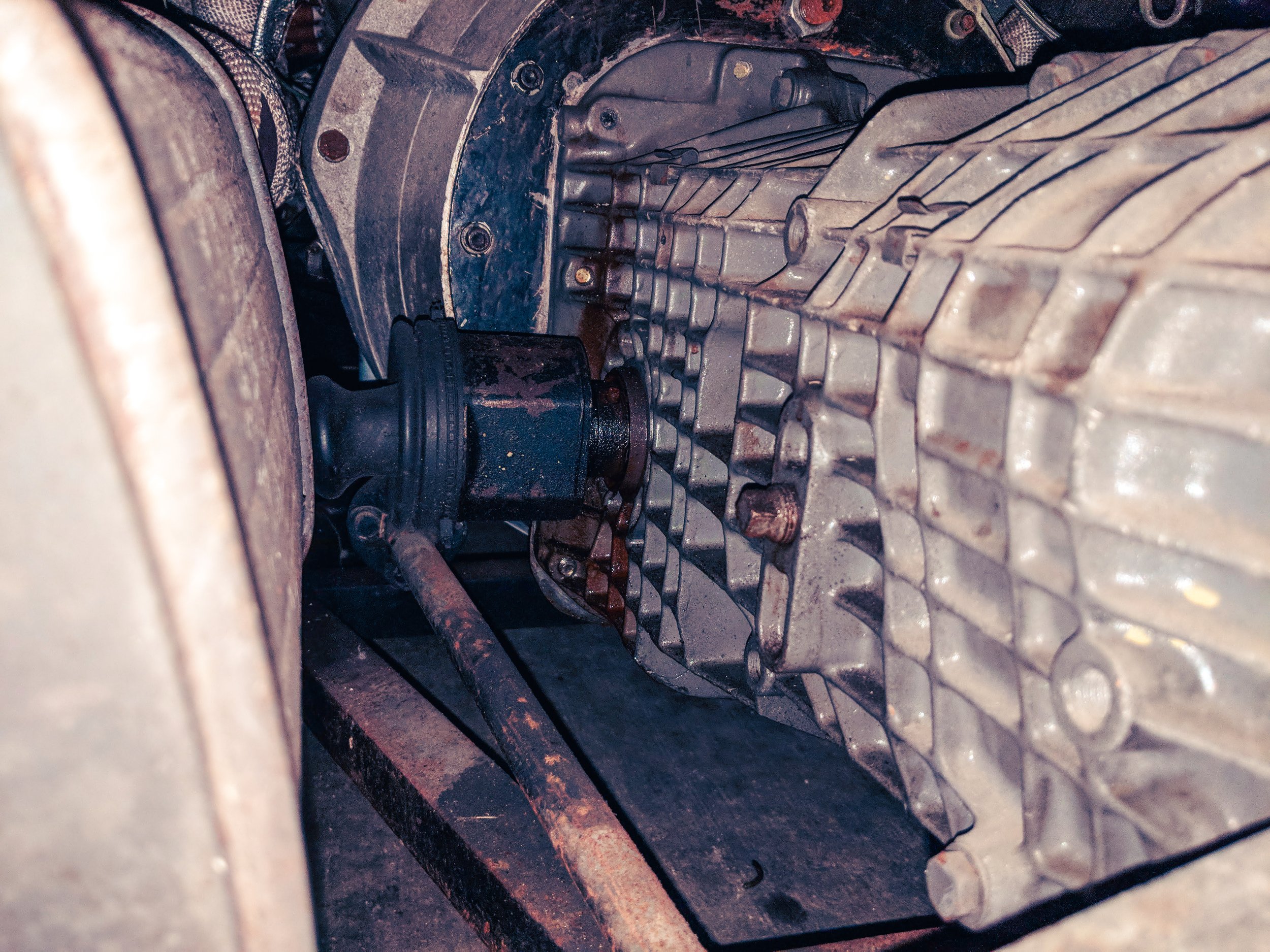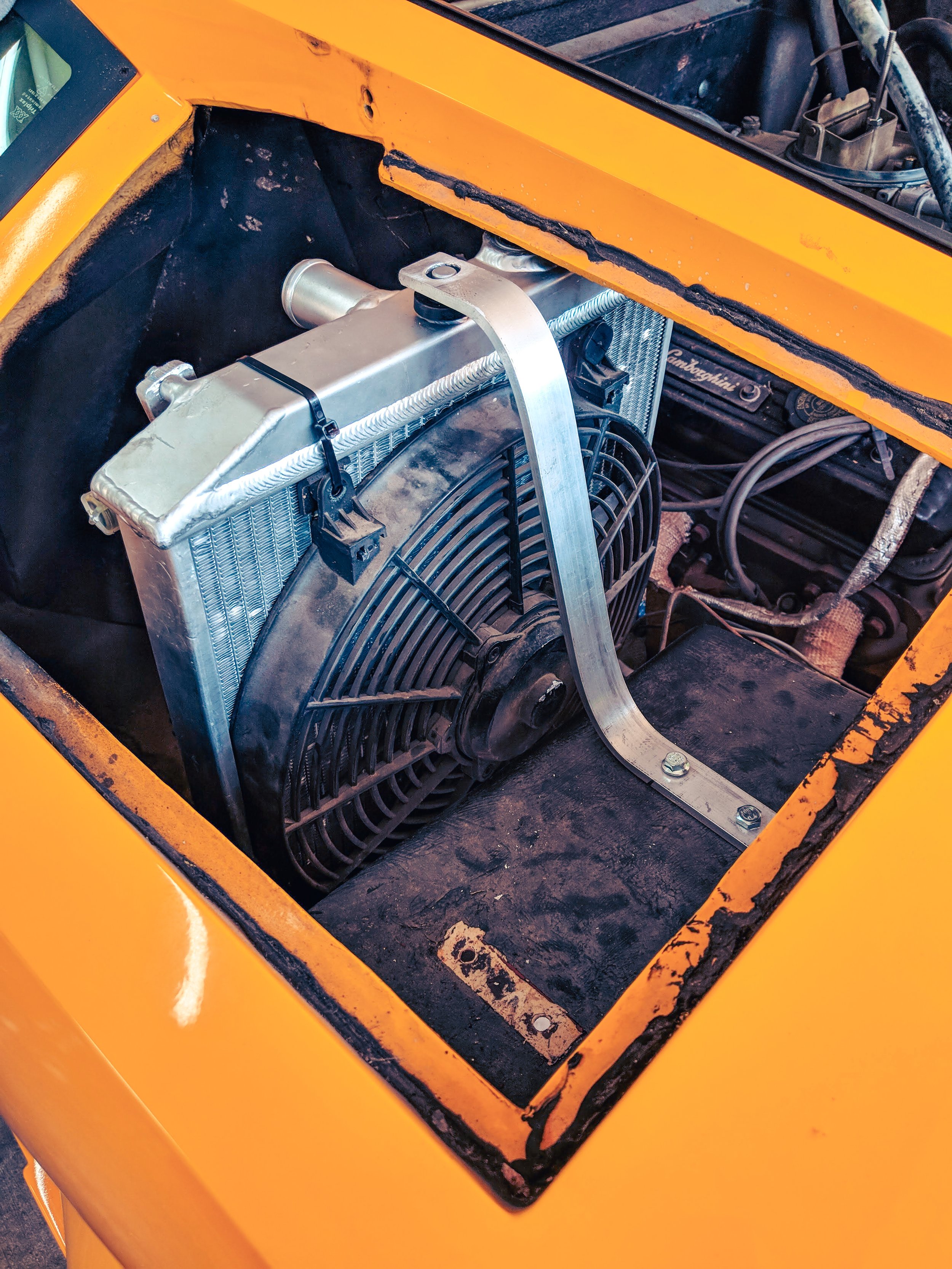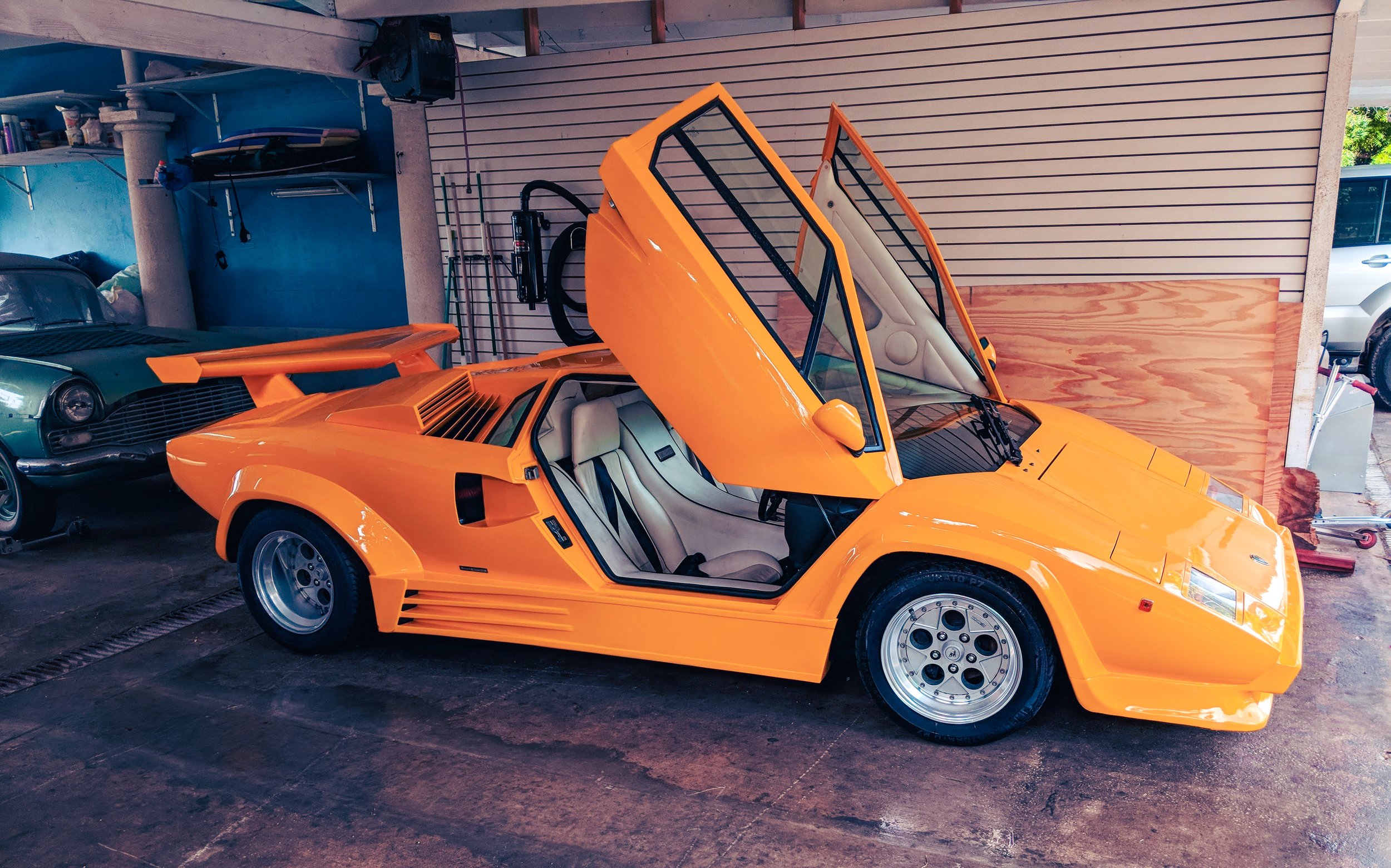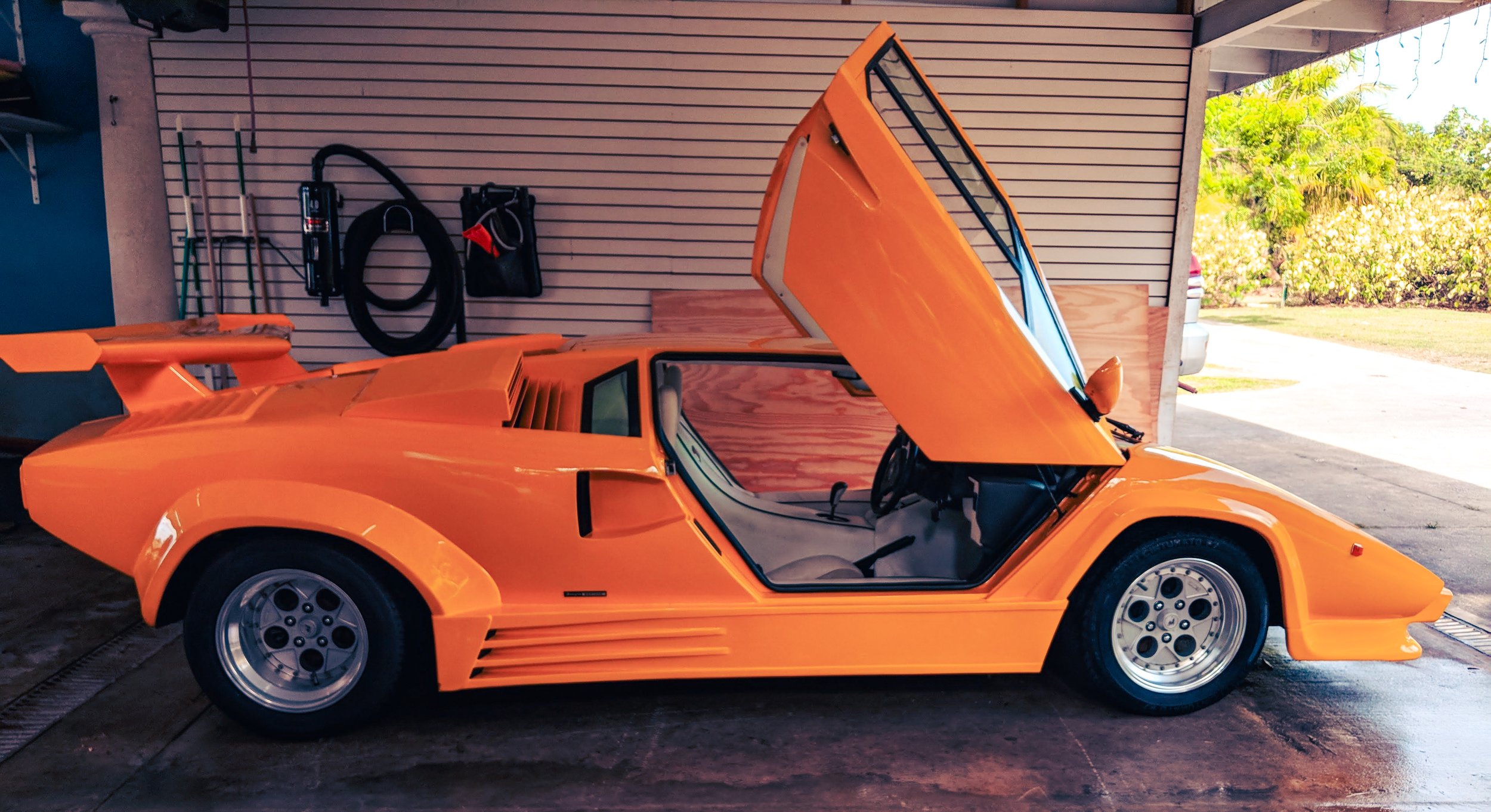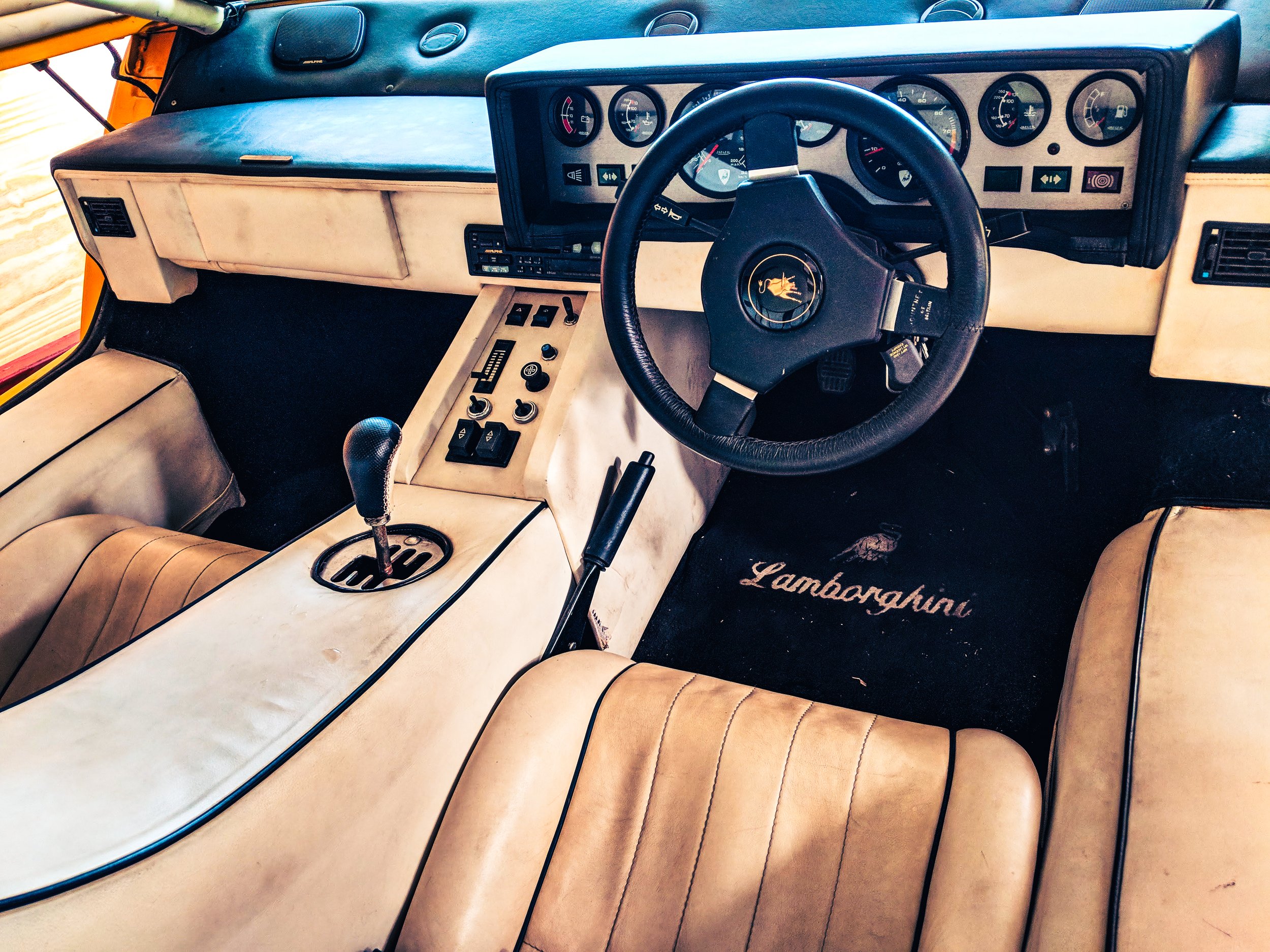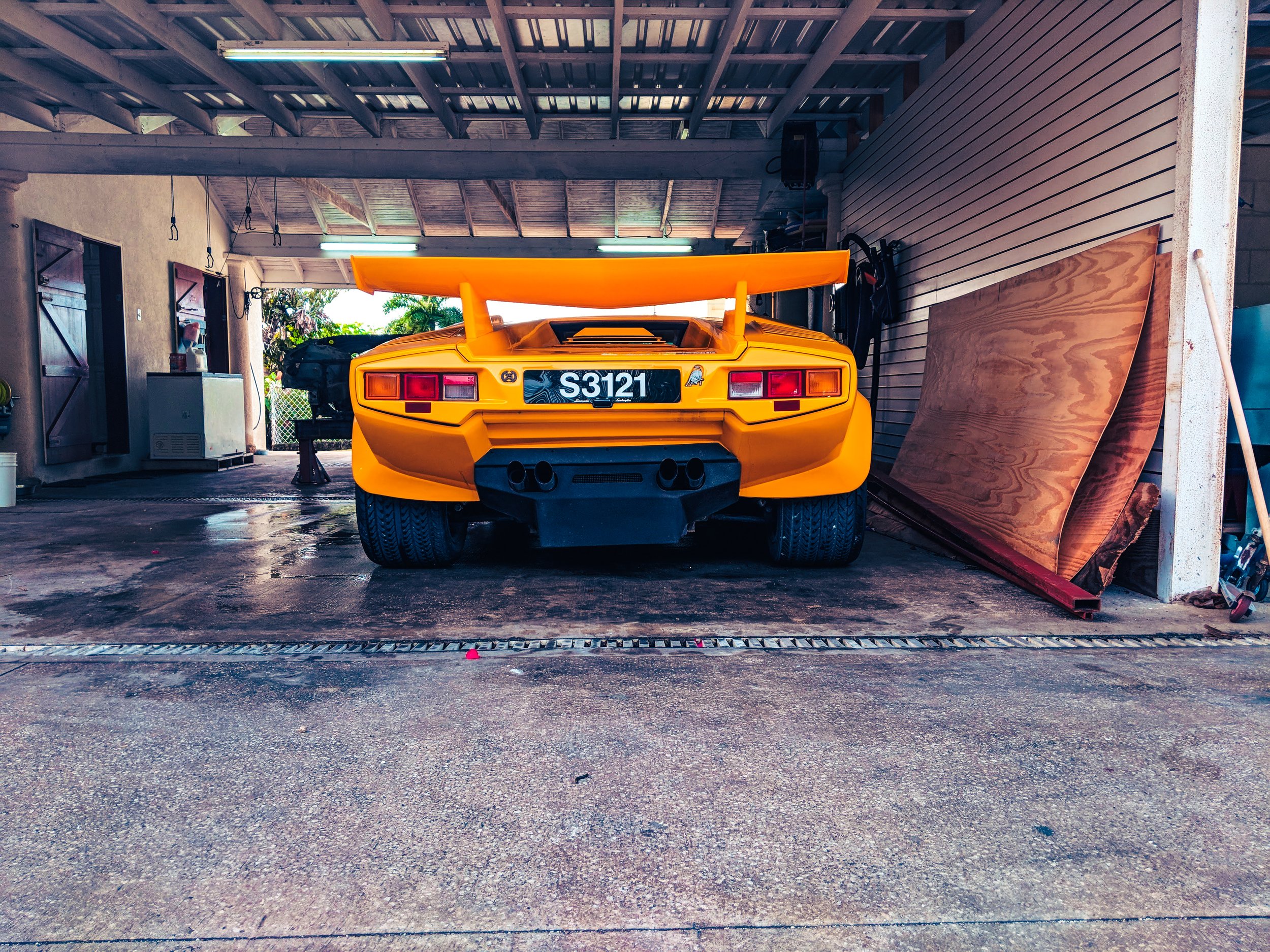Lets Dig in
A kit car brings a different dynamic to the mix, and it’s a normal progression in our society as well. Kit cars are, dare I say it, the “TikTok” remixes of the car world. Its more substantial though, instead of being washed away into the endless ocean of content, this stays with you, every day you look outside and it’s there.
All this talk about “Gap Burgers” and the like, has us all in anticipation for this car, my eyes were ready to feast on the finished product created in front of us for the last few articles. I turned my camera lens toward Project Lamb and was not disappointed.
“Gimme de gap burger nuh”
Finally, seeing this car in person, I would like to share my thoughts and feelings in this article, it’s great to know the numbers and the mechanical aspects of this car but, the majority of the experience of owning a car like this touches on the emotional side. If you haven’t read the previous articles I will drop a link here for the first “Project Lamb” Article. I have touched on the specs of this motor, suspension, and drivetrain.
Cars are utilitarian devices, and they take us from one point to the other, before cars, we used carriages and before them we used horses and if we go further back we walked. Now here’s a thought, do you think in the year 6000 BC a well-to-do caveman would show off his latest iteration of “barefoot transportation”? It seems like a dumb thing to suggest, but how is it that in this day and age, our mode of transportation means more than just travel? Society needs art and art needs society. Artists carry with them the ideas and pervading thoughts of a generation of persons and they document them in the work they do.
I love art, I love design, and I love cars. When an artist, a mechanic, and an engineer come together, it makes something special. The “Countach” was a functional art piece. It looked like it belonged more in the living room than on the road. It’s exceptionally difficult to imagine this car sitting in traffic, but in the 1980s when this car first rolled off the lot it was something that happened. Its lines differ so much from the normal round body design of a turn-of-the-millennium car we know, or the square box of an older car from a similar age. This car was built to stand out.
A kit car brings a different dynamic to the mix, and it’s a normal progression in our society. Kit cars are, dare I say it, the “TikTok” remixes of the car world. It’s more substantial though, instead of being washed away into the endless ocean of content, this stays with you, every day you look outside and it’s there.
It’s a personal iteration of the best “Countach” in a person’s opinion. There are no numbers to match, no factory paint to maintain, and no random logos on parts to subtly place for a viewer to see by “accident on purpose” to make them feel they noticed something because they are observant. This gives free rein for the taillights and the wing to be from different eras of the model. The 25th-anniversary wing looked hella cool, but the more subtle full lens of the later model Countach was way more stylish and suited the body lines better.
This car was built around having fun, as crazy as the thought of driving it is, imagine driving it fast. Yes, this art piece that should be sitting in someone’s living room, will do immense numbers, if you have the constitution for it. I am not sure if the thrill of driving it fast comes from the thought of impending doom if it’s hit, or maybe the fun is derived solely from the speed. Perhaps it’s a mixture of both, you can ride on the razor’s edge of losing years of work and experiencing this machine come to life. It bites back, it attacks you whenever you let your guard down, but mastering it feels incredible.
The first man who took the step to go from barefoot to horseback, what was his reaction to experiencing the fastest he ever went in his life? How did feel when descended from the horse and parked it outside, did he crave the freedom of riding, lying on his back unable to sleep because of pure excitement? How did he feel knowing he had the only black horse in the village and it was the fastest? He would’ve made a special bond, only he and the horse would understand, solely because of a shared experience.
He could groom this horse, and tie its hair in different patterns, historically it varied from culture to culture. We can see where this obsession could have started. From horseback to chariot, from a single horse to 2 horses, to 4 horses, and the luxury of a coach and in our age, 400+ horses at your command, to take you where you need to go. Would you be able to sleep when you parked this or would you lay on your back unable to sleep because of pure excitement?
This car hits on all the points that make something enjoyable to own, and drive. It makes me so excited and I don’t even own it. writing this article, it really built up in me that excitement all over again when I saw it for the first time. It is something incredibly special. I am sure, everyone who loves their car will feel the same way, about their car, the freedom that comes with the car, and the enjoyment you gain from using it.
Working with SDRR Hydraulic & Industrial Spares Inc. on covering this project has been amazing. I want to thank them for reaching out to us, and we encourage all our readers, to give them a call and see if they can help you with your personal projects. Until next time,
Happy Motoring!
Follow Sleeper Forest on Social Media!
Sleeperforest_alex - that’s me!
Dio Mio, Is this "Gucci"?
On that day you have a really small meal that tastes amazing, for sure, and you wear your evening attire, and it’s an amazing occasion, photos are taken and you head back home, but let’s be honest, nothing beats the taste of a Gap Burger after you’ve had 5 beers and a few shots of rum. It’s greasy, it’s sloppy and it’s brash. All the photos are horrible and that’s the memory you keep with you forever. We all want that greasy gap burger for real. Burger Boys through and through.
If you wanted to run some Italian guy that’s really into Italian-designed cars up a wall, where would you start? He would definitely feel flattered knowing that you loved the exterior design of the car so much you’d copy it, but when he looks at it internally he’s gonna lose his mind if he knew it wasn’t all spaghetti and meatballs in there. It’s not fine dining, it’s not sophisticated, like a fine Armani suit, or a Louis Vuitton bag, it is not “Gucci”.
To be honest, that’s the issue I personally have with the discussion of “PuRiTy” where we hear over the internet that some cars should not be tampered with in particular ways, and this is why I am happy to have an engaging look at “Project Lamb”. Put simply my argument goes this way, we spend the majority of our time eating normal food, and a fine dining experience isn’t something that happens every day, it’s special, reserved for once in a blue moon, if not it runs the risk of losing its aura.
On that day you have a really small meal that tastes amazing, for sure, and you wear your evening attire, and it’s an amazing occasion, photos are taken and you head back home, but let’s be honest, nothing beats the taste of a Gap Burger after you’ve had 5 beers and a few shots of rum. It’s greasy, it’s sloppy and it’s brash. All the photos are horrible and that’s the memory you keep with you forever. We all want that greasy gap burger for real. Burger Boys through and through.
How Do We Make Our Gap Burger?
- THE PATTY
“We want displacement and raw power.”
The sophistication of fine Italian food is seen in the construction of the Lamborghinis flat plane V12. It has been central to the design of many Lamborghinis since the Miura. It’s slow-cooked, refined, seasoned, and done to perfection. Yeah, we don’t want that around these parts, we want displacement and raw power. Throw the meat on the grill in the form of a Chevy small block, 5.7 liters of raw power stroked out to 6.2 liters and making 481 units of pure, and unadulterated democracy to its crank. It’s almost the most basic of V8s, bulletproof and consistent. Part Availability is much higher if anything ever goes wrong with it, and aftermarket support is endless. These engines were used in Racing, family cars, minivans, trucks, and boats, the basic patty. In Project Lamb, its engine was replaced with a crate engine that was ready to go. Edelbrock provided the electronics along with it, to convert it from carburation to electronic fuel injection (EFI). This was made incredibly easy with the kit, it’s a plug-and-play kit replacing the inlet manifold with provision for port injection and fuel rails and delivery along with the Electronic Control Unit (ECU).
Once you’ve cooked your patty, you have to add the cheese, and that cheese is the EFI system, this overall system brings the engine into the 21st Century. The small block was mated to a gearbox from Renault. The UN1-16 gearbox can be found in cars like the Lotus Espirit. The shifter was a little dated though, and needed some ingenuity using some parts from the a Suzuki for the shifter assembly.
The cooling system was built around the new engine set up as well. A dual aluminum radiator set up was placed at each vent just behind the passenger doors, they were mounted up with brackets and fans attached to them. Racingline hoses replaced the old hoses and a new filler tank was added at the top of the system so it can be bled easily. These radiators are so far doing a good job keeping engine bay temps down coupled with their fans. Coolant temperature sensors would then be run to the Edelbrock ECU, where it can be managed.
With, air, spark, and fuel sorted with the engine it will run. All of this being managed with the new electronic management unit meant that the powertrain of the car would work and deliver its power to the gearbox. In our next “Project Lamb” update, we will take a look at what this Gap Burger patty would go in to make it the full package.
Aren’t you hungry?
Happy Motoring!
Follow Sleeper Forest on Social Media!
Sleeperforest_alex - that’s me!
Project Lamb
Yes, by the way, if you’re asking if it's a kit car you’d be right. No, if you think that just because it's a kit car it loses all validity and purpose of discussion, let’s get that out of the way to start. I think the fact that this is a kit means a lot more than if it was a real Countach, and at the end of this series of articles I am hoping you would feel the same way too.
As a Bajan, I attest to the fact that if there was a really interesting car ever made in the world, there’s probably one in Barbados. This little gem in the middle of the Atlantic Ocean is home to some incredible car enthusiasts.
Does anyone remember when the screenshot of this image went viral in all the car groups in Barbados a few years ago? Everyone claimed they knew the person that made it, and a ton of discussion was started about where it came from, if it was real, and basically who had the sauce on this iconic machine. Well, along with SDRR Hydraulic & Industrial Spares Inc. Sleeper Forest was given the opportunity to serve up the much-desired sauce on this very spicy topic.
Yes, by the way, if you’re asking if it's a kit car you’d be right. No, if you think that just because it's a kit car it loses all validity and purpose of discussion, let’s get that out of the way to start. I think the fact that this is a kit means a lot more than if it was a real Countach, and at the end of this series of articles I am hoping you would feel the same way too.
The Dream
All great projects start with a dream, in fact, the brand Lamborghini started with a dream when the owner of a Ferrari was not given the dream car he wanted. So he built it himself. This is my first point of argument regarding this car being a kit car, and why that matters. Kit cars are made with similar if not the same passion as the original car it’s based on. There are many levels that are ultimately determined by budget at which to pursue replicas but at the end of the day, the joy spans from building, and driving. We have examples in California where resto-mod cars are being recreated by Singer Vehicle Design, which specializes in Porsche.
Let’s take a look at this car here though. The kit was created by a UK company called Mirage. Legend has it that it was made through very nefarious means. A Countach was rented and all the panels were copied and molds were made of them, the Countach was then returned after the deed was done. This means that the standard of replication was incredibly high. I am sure the designer of the Countach was rubbing his ears all weekend when that happened, however, this cannot be confirmed. The production of this clone was definitely different from what was standard at the point of time, where a Pontiac Fiero was used as a donor car, it was extended and random panels slapped on it, and it was shipped off as an “Umborghini Countach”
This specific kit was imported to Barbados in 1996 by Evolution Cars in Six Roads. Specializing in Moke conversions, specifically the Suzuki Maruti moke and the fiberglass-bodied mokes. They even had one that was dubbed the Limoke as it was a stretched version. This Kit utilizes Lambo OEM parts, and in definite Lambo fashion, those parts came from other car companies. As you can see…. A Lamborghini is a kit car itself, assembled in Italy. Indicators and headlights from Fiat, locks from Mercedes, you get the idea. Knowing this goes a long way when building or repairing the kit. When the Kit was fully assembled it was presented to its first owner, he would drive it once or twice and then it sat. He sadly took ill and passed away eventually. The car was in storage for many years until it was found again, and the opportunity to restore it came up.
The powerplant of this kit car used an American 350 cubit small block V8. It was carbureted. This was mated to a Renault UN15 gearbox, something you would find in a Lotus Espirit, another rear-mid-engined car. After its maiden voyage with new ownership, it was clear this car was going to need some work and lots of it. It was definitely no Lamborghini. The suspension was shagged! And with windows that don’t go down more than a crack air-conditioning was imperative. The small block V8 left much to be desired to feel like a supercar, shifting gears felt like stirring soup and with those ultra-wide tires, steering was going to need some kind of mechanical assistance.
These fundamental points needed to be addressed if this car had any hope of being anything enjoyable to drive. Now that we have introduced you to “Project Lamb”, we will finally go in-depth, on how this project was reimagined, into someone’s dream car. The next article is coming soon, so stay tuned! Happy Motoring!
Follow Sleeper Forest on Social Media!
Making a K20 Fit
SDRR was founded in 1999, they specialize in the the repair and made to order assembly of hydraulic and air hoses, metal lines and control cables for agricultural, construction, marine, automotive and industrial applications. When the guys at SDRR, told SF to come down to take a look at their project car, we were naturally super excited
Companies are teams of people working together. Good Companies are made of good teams, this is why building a good team is always stressed upon when striving for excellence. A few companies may pay for their workers to go to the beach together, or play a sport together, but SDRR Hydraulics and Industrial Spares Inc is a little different. Instead of going to the beach, or playing a sport, they decided to build a car. This is a company retreat I can get behind.
JabarI works at sdrr barbados
SDRR HYDRAULICS AND INDUSTRIAL SPARES INC.
SDRR was founded in 1999, they specialize in the the repair and made to order assembly of hydraulic and air hoses, metal lines and control cables for agricultural, construction, marine, automotive and industrial applications. They also provide spare parts, lubricants, accessories and industrial supplies from industry leading brands such as Aeroquip, Deutz, Tamco Tools, Permatex, Wix and Phillips 66 Lubricants. They were also known for project car they had in the works, for a while now, they were posting progress images for a few years on social media while it was being built. When the guys at SDRR told SF to come down to take a look at their project car, we were naturally super excited.
An unlikely FIt
This Honda Fit wasn’t their initial idea. In fact, they were learning towards something German, but a Honda as a project car was tossed around as an idea in the office for a while and it eventually stuck. This chassis was one of the younger ones they found and it carried the RS badge from factory, which meant it was a 7 speed automatic 1.5 L Ecobox. This didn’t matter though, as they had plans to make this all change.
Now you must be asking yourself “but Maurice it’s just a Honda Fit,how is that special?” well besides the monocoque chassis which makes it very light weight and rigid. The Honda fit, is a biological descendant of the Honda Civic. This is gives it some measure of credence to it’s family occupation, that of being a track day bully.
Engineering a Race Car
Building a race car, actually starts with tearing said car apart and preparing it from the ground up. SDRR did not hold anything back when they were building this car. The chassis of the car wasn’t perfect when they started though, it suffered from front end damage when it was bought. That was fixed.
Looking into the cockpit of the car we can see the changes made which makes the car very track day oriented. Everything is now displayed on a Racepak cluster which covered the OEM cluster, the only thing it’s used for now is the fuel gauge. Making it super easy to track rpms and road speed and other miscellaneous things which are now easy to keep track of.
Bucket Seats and a detachable racing wheel were also added to, as well as a racing harness. these are super essential for safety of any occupant in the car. These seats were imported along with other important bits needed to make this car what is.
K-tuned Shifter
For the shifter, it was replaced by a K Tuned Race Shifter, ensuring gears aren’t missed, which can lead to lost time on the track and the easy to reach hand brake is right next to the shifter, for those really really, sharp corners should they show up. A swirl pot tank, was also added to the fuel tank this ensures there’s always positive pressure for fuel when taking high G corners.
Swirl pot and battery in the back
And, of course the part that ultimately stops the family from stepping into the rear of the car. The roll-cage, which was actually fabricated here on the island was installed. The battery of the car was moved to the middle of the chassis making some space in the engine bay, but it also helped to change the weight balance of the car. The Honda Fit actually has a really odd layout. It’s fuel tank sits in the center of the chassis, so the weight of a full tank of gas, the weight of the engine, and the driver all sits somewhere in the middle of the car.
“It handles extremely well, despite its suspension layout is very basic.”
Although the Fit wasn’t originally going to be their first choice when looking for a car to build. I’m sure they’re glad they did.
The engine
So, I know you clicked, because you saw K20, and nothing gets a JDM fan, or a Honda lover going as much as that one letter followed by 2 numbers. Creative builders have been finding ways to utilize this engine in as many ways as possible, from standard Honda to Honda swaps, to really weird Toyota and Nissan swaps.
The belly of the beast
Inside this Honda Fit, sits a 2.0L K20 engine, from a DC5 Integra Type R. Although this is a Honda to Honda swap though, it is rare swap to do so rare in fact, most parts were fabricated so it could work. Although the swap has been done before there aren’t many direct bolt on parts for this swap. The engine harness was built by Rywire. All of the braided brake lines, fuel lines, oil cooler lines and clutch lines were done by SDRR.
Just enough room
Although it’s stock the engine really hauls this car along, Type-R engines are amazing. The car weighs in at around 1085kgs (2392lbs) and with an engine making 214 whp its moves. The engine is managed by a Hondata ECU and was tuned by Fabian Tudor here in Barbados.
How Fit is it?
The car was built for the track and it has been doing well around our local track Bushy Park in both track days and Drag racing events. The car has done about 1:15 around the track and has done 8.9 seconds in the 1/8th of a mile at Drag racing events.
The biggest accomplishment is being able to finish this project. We all know how project cars go, a lot of them are never completed but after 4 years of work this one is up and running. K-swapped Honda Fit.
We love builds like these, putting a more powerful engine into a light chassis, conceptually simple but still complex. It’s always nice to see people getting together through their love of cars and getting things done. It’s a beautiful thing really.




















































